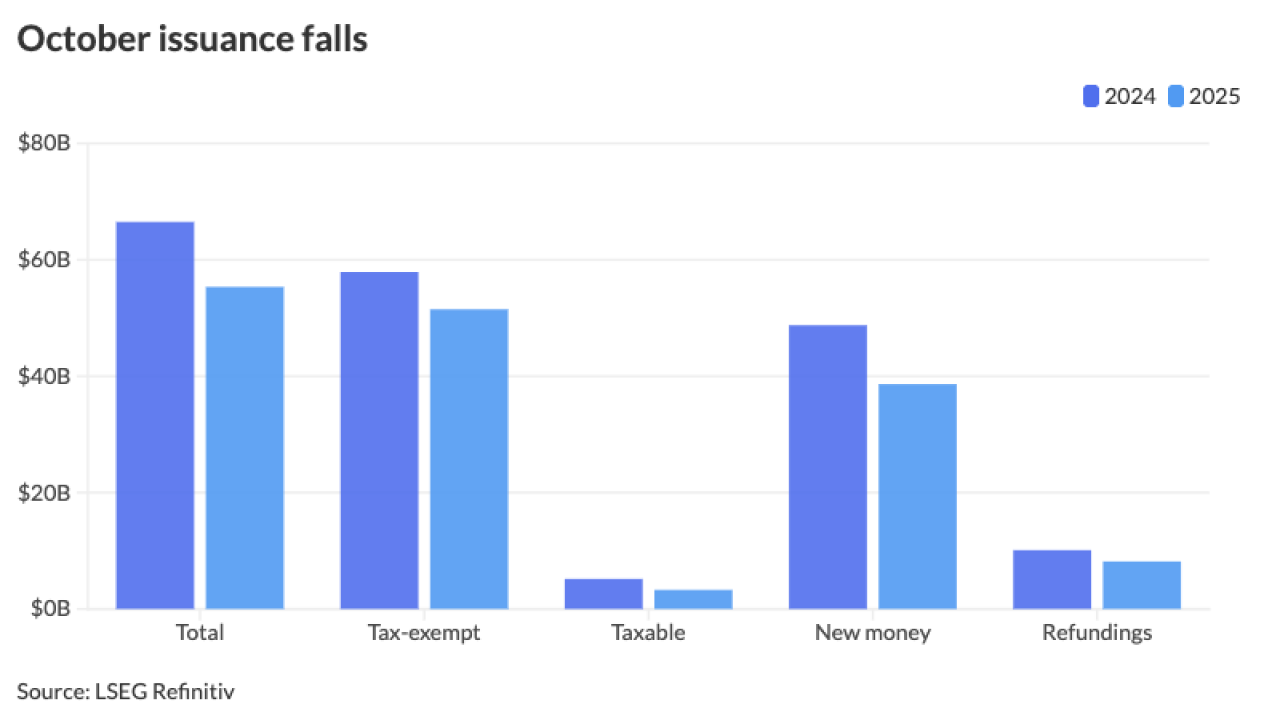The Federal Open Market Committee voted to cut the fed funds target range 25 basis points to 1.75% to 2% as “uncertainties” offset the prospects for “sustained expansion of economic activity, strong labor market conditions, and inflation near the Committee's symmetric 2 percent objective.”
The panel was split, with Federal Reserve Bank of Kansas City President Esther L. George and Federal Reserve Bank of Boston President Eric S. Rosengren again dissenting in favor of no change in the rate. Federal Reserve Bank of St. Louis President James Bullard, also voted against the move, arguing for a larger 50 basis point cut.
The Fed's dot plot suggests the panel will hold rates through the end of next year, then increase to 2.1% in 2021 and 2.4% in 2022.
But FOMC member unanimously voted to reduce the interest paid on reserves to 1.8%, effective Sept. 19. “Setting the interest rate paid on required and excess reserve balances 20 basis points below the top of the target range for the federal funds rate is intended to foster trading in the federal funds market at rates well within the FOMC's target range,” the FOMC said in a statement.
The Fed, on Wednesday, injected another $75 billion of liquidity in the market as demand pushed short-term rates above the Fed’s target range, which at the time was 2.00%-2.25%.
“We believe this repo event is in response to a short-term surge in bank demand for liquidity and is not a crisis in confidence similar to that of 2007-2008,” said George Rusnak, co-head of global fixed income strategy at Wells Fargo Investment Institute.
While the shortage is not a big deal for the short-term, it could be signaling the Fed needs “to examine whether there’s enough liquidity in the system,” according to Luke Tilley, chief economist at Wilmington Trust. “We’re living in a different market than we were before 2008.”
Fed Chair Jerome Powell has said that the market would determine where the Fed’s balance sheet should be, and having had to inject reserves for two consecutive days, the market “can be signaling to the Fed where demand for total reserve is,” Tilley said.

The Fed may need to increase the size of its balance sheet, since “excess reserves are clearly not excess,” meaning they’re not beyond what banks want and need to hold, Tilley said.
The challenge will be communicating that the balance sheet addition would be based on liquidity needs, not a monetary policy move, he said. And the Fed reacted appropriately to this “blip” and can add a standing repo facility to avert future shortages.
"High leverage, dependence on overnight and shorter dated repo coupled with a steep decline in excess reserves over the past several years has left the repurchase agreement market vulnerable to sharp moves higher when funds leave the system,” said Hugh Nickola head of fixed income at GenTrust.
Corporate tax payments being due and Treasury auction settlements led to the shortage. “Although the Fed has been aware of this brewing problem for some time, it was thought that the current level of excess reserves (about $1.3 trillion) was still high enough to temper any spikes in borrowing needs,” he said. “Clearly that is not the case, so the Fed has had to move quickly to interject liquidity.”
But the Fed may have to again inject funds when “pressures arise."
Going forward, the Fed may find it “difficult to justify” future rate cuts, “based on the current state of the economy and upticks we are seeing in inflation figures and wage growth,” Nickola said. “This is particularly true if we see improvement on the trade war front.”
It would be wrong to assume excess reserves are lacking, according to Bryce Doty, senior vice president/senior portfolio manager at Sit Fixed Income. “It’s not that there aren’t enough reserves, but that they are difficult to pry loose from the bosom of the Fed that pays 2.10% with essentially zero risk of default.”
His solution? “The Fed needs to stop paying interest on all of the excess reserves and require banks to post T-bills for a portion of their excess reserves. This would immediately reduce T-bill yields, steepen the yield curve, and most importantly, free up excess reserves for overnight liquidity needs.”
No matter how much money “the Fed prints to increase its balance sheet,” banks will be lured by the 2.1% the Fed pays on reserves, “especially in times of uncertainty,” he said. “So when the market needs liquidity the most will be precisely when excess reserves will be the most difficult to pull away from the Fed to be lent to other banks.”
Housing starts
Housing starts surged 12.3% in August to 1.364 million units on a seasonally adjusted annual basis, the highest they’ve been since June 2007, while building permits gained 7.7% to a 1.419 million unit pace, the highest rate since May 2007.
The July starts number was revised to 1.215 million from the originally reported 1.191 million pace. Permits were at a 1.317 million pace in July.
Economists polled by IFR Markets expected 1.247 million starts and 1.300 million permits in the month.
“We have long maintained that fundamentals are favorable for housing — the depleted stock of existing housing inventory, low unemployment, better real wage growth, and demographics — but the sector has received a welcomed boost from declining mortgage rates after the run-up last year,” according to Berenberg Capital Markets U.S. Economist Roiana Reid. “The combination of increasing housing starts and new and existing home sales has put residential fixed investment (in GDP) on track to increase in Q3 for the first time since Q4 2017. Housing is joining consumption in offsetting sluggish business fixed investment and exports, and supporting moderate GDP growth.”





